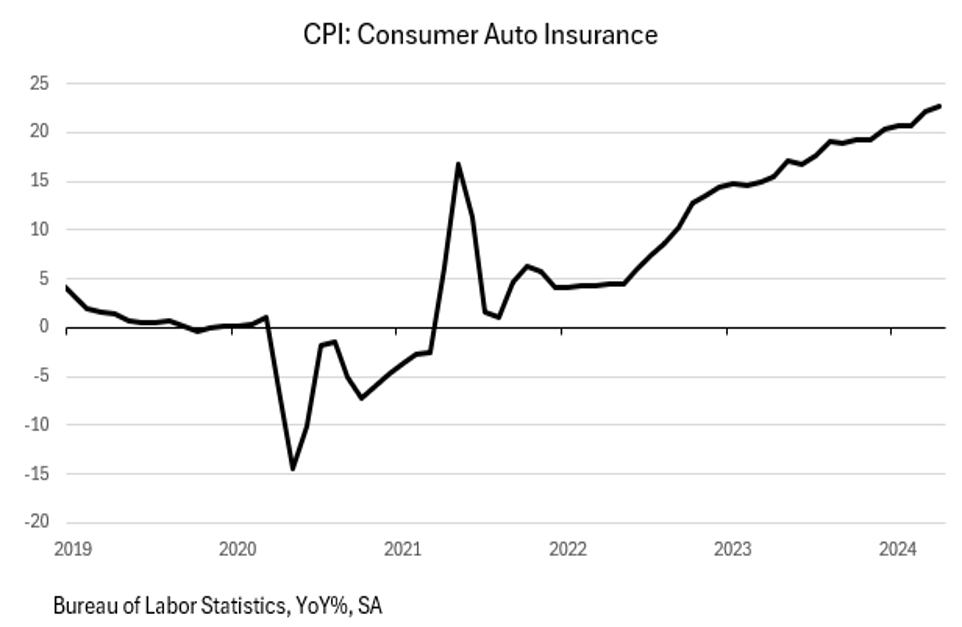In recent economic news, the Producer Price Index (PPI) for April showed a higher than expected increase of 0.5%. However, the market remained calm as the year/year change on the headline index was still only 2.2%. The small increases in healthcare services and insurance rates also contributed to the lack of market volatility. The Consumer Price Index (CPI) release for April showed a more positive outlook with a month/month reading of +0.3%, lower than the expected +0.4%. While some areas like auto insurance and health care services have contributed to the rise in CPI, overall disinflation and deflation seem to be prevailing.
The CPI’s heavily weighted shelter component has created an upward bias to the index. Removing the shelter component from the “core” would result in a year/year inflation rate of just 2.1%. Prices of goods like new autos and used cars have been deflating, along with appliance and furniture prices decreasing. The U.S. consumer appears to be reaching a point of exhaustion, with savings rate declining and credit card balances at all-time highs. Delinquencies are rising across different credit types, and banks are rejecting requests for increased credit limits, leading to a slowdown in consumption.
April’s Retail Sales were flat on a nominal basis and fell by 0.3% in real terms, indicating a decline in consumption. The manufacturing economy continues to show signs of recession, with surveys from the Federal Reserve Bank indicating negative trends in various sectors. The National Association of Home Builders Index also showed a decrease in May, attributing the softness to high mortgage rates. Housing starts and applications for new building permits have also fallen, impacting the rental market and putting downward pressure on the CPI.
Despite the weakening economic backdrop, financial markets have been rising, driven by the prospect of rate cuts by the Federal Reserve. The market is now pricing in two rate cuts, one in September and one in December, up from one or none in April. While some FOMC members have maintained a hawkish stance, markets are focusing on incoming economic data and anticipating rate cuts. 10-Year Treasuries have seen declining yields, while equities have seen price increases, reaching all-time highs in some indexes. Commercial Real Estate has also seen issues with large foreclosures, hinting at potential banking issues in the near future.
In conclusion, the mixed messages from PPI and CPI data have led markets to believe that inflation is abating, and they expect the Fed to lower rates twice before the end of the year. The construction of the CPI and the tapped-out consumer point to a downward trend in inflation. Economic surveys have been pessimistic, showing weakness in manufacturing and housing sectors. Despite continued hawkish statements from the FOMC, financial markets are focused on incoming economic data and anticipating rate cuts in response to a weakening economy.


